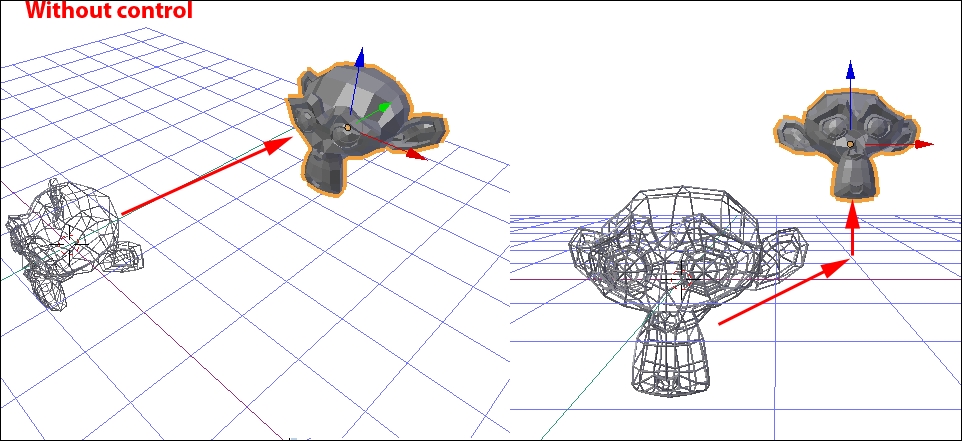By default, operators in Blender operate on a 2D plane tangential to the view. This is a fancy way of saying that without any additional controls, it can be hard to predict how a movement or rotation operation will work. For instance, moving something in a random view can include moving up and down more than expected. This effect won't be clear until the view is changed and the transformation is inspected from a different angle, as shown here:

If you can't predict how operations will work, it can be hard to make the things you want. So it is very important to be able to control transformations.
There are two main ways of controlling operators: controlling the view and axis locking.



